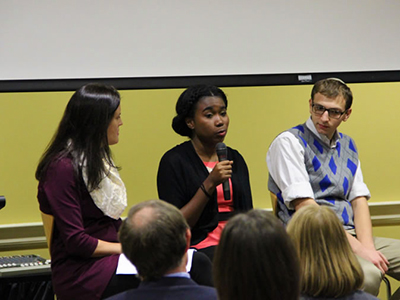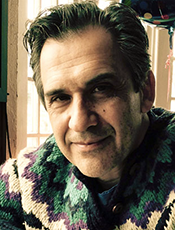Language
Is language unique to humans?
 Consider the last time you ate or ran; consider the last time you saw an animal eat or run. We see our behaviors in other animals as expected from the Theory of Evolution. However, when was the last time you saw an animal ask a question? Together we will use the tools from all of the language sciences to examine if other animals have language and if so…. in what form?
Consider the last time you ate or ran; consider the last time you saw an animal eat or run. We see our behaviors in other animals as expected from the Theory of Evolution. However, when was the last time you saw an animal ask a question? Together we will use the tools from all of the language sciences to examine if other animals have language and if so…. in what form?
You can expect to:
- Learn about language and thinking in humans and other animals.
- Practice producing and presenting scientific ideas that you have researched.
- Develop the ability to formulate a convincing scientific argument.
- Work in teams to research language evolution or development and draft a Wikipedia page to share your findings.
Community Course
LING272: Biophysics of Language. Explore the physiology of the mind and brain, how it evolved, how it emerges in learners' minds, and how it decays through injury and illness. Insights from linguistics, cognitive psychology, neuroscience, animal behavior, molecular biology, and biophysics are brought to bear on how an abstract systematic behavior can arise within an animal brain. (3 credit course, fulfills General Education requirements of I-Series and Natural Science).
View a sample syllabus for LING272.
Instructor
 Juan Uriagereka is a linguist who joined the University in 1989. He has published a dozen books, including two textbooks on the Minimalist Program and its precursors, as well as many articles and chapters. Uriagereka was a founding member of the Linguistics Department. He has directed or co-directed 19 dissertations and participated on many others. In his capacity as Associate Provost for Faculty he led the approval and promotion of family-friendly policies, regularizing the status of professional-track faculty, organizing leadership forums, and updating promotion and tenure policies.
Juan Uriagereka is a linguist who joined the University in 1989. He has published a dozen books, including two textbooks on the Minimalist Program and its precursors, as well as many articles and chapters. Uriagereka was a founding member of the Linguistics Department. He has directed or co-directed 19 dissertations and participated on many others. In his capacity as Associate Provost for Faculty he led the approval and promotion of family-friendly policies, regularizing the status of professional-track faculty, organizing leadership forums, and updating promotion and tenure policies.